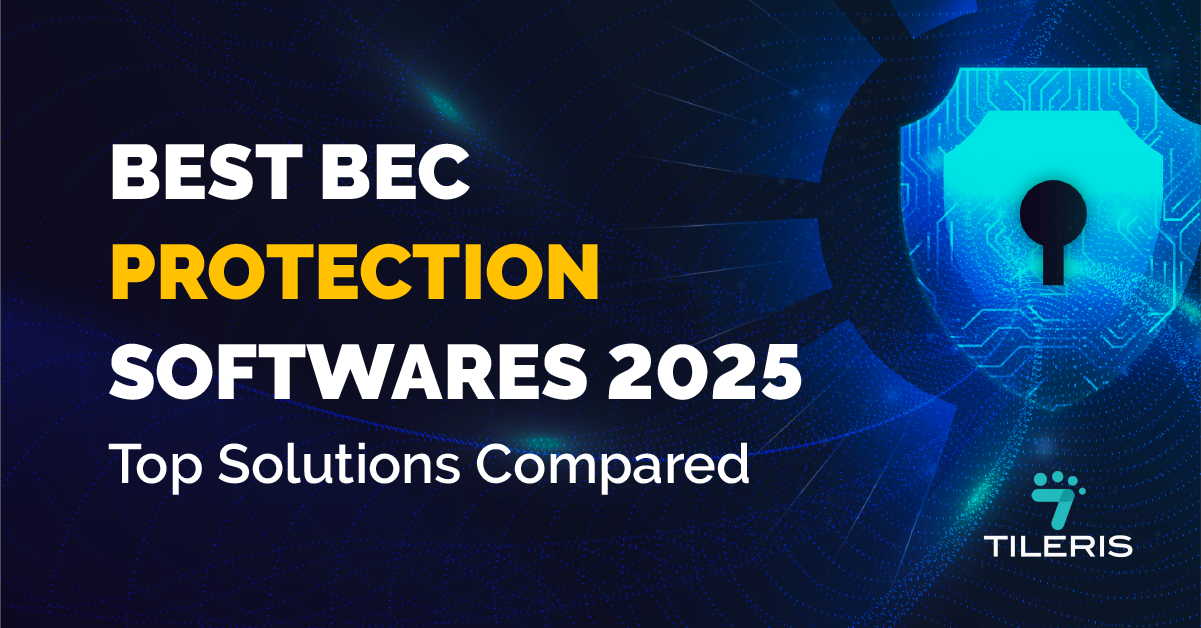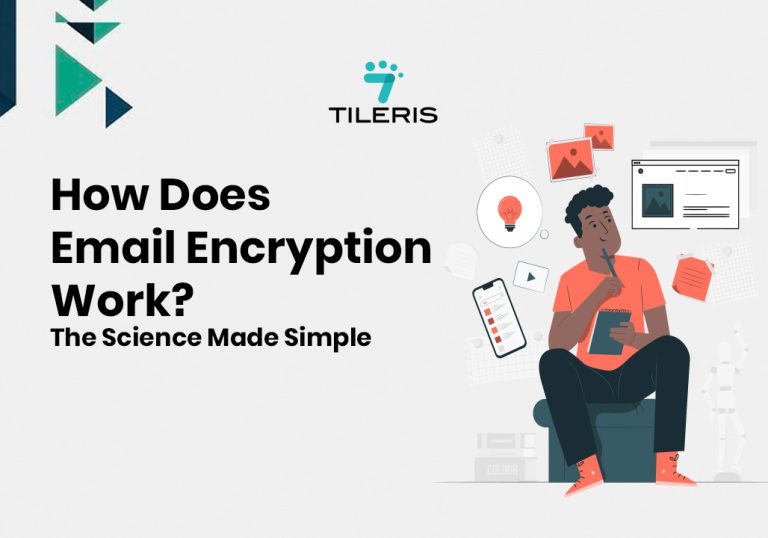Best BEC Protection Software 2025: Top Solutions Compared
Introduction
We all get a ton of emails every day. And while most are harmless, there’s a growing threat lurking in our inboxes: Business Email Compromise, or BEC. This isn’t your old-school spam or a dodgy link trying to steal your Netflix password. BEC attacks are sophisticated, often malware-free, and they play on human trust.
They’re designed to trick you or your colleagues into making a payment to a fraudster or handing over sensitive information. Think of it as a master impersonator, pretending to be your CEO, a trusted vendor, or even a client, all to get their hands on your company’s money.
The scary part is BEC attacks are incredibly effective and financially devastating. In 2025, these attacks are only getting more cunning, thanks to things like AI making those fake emails even more convincing.
So, what should a smart business do? Trusting your gut isn’t enough these days, you need the right tools on your side.
When we talk about “BEC protection software,” it’s not usually one magic bullet. Instead, it’s about building a strong defense, much like a fortress with multiple layers. We’re going to walk you through the top solutions out there in 2025, explaining why they stand out and how they work together to keep your business safe.
Advanced Email Security Platforms
These are your primary defenders, the first line of security that scrutinizes every email coming into your organization. They use smart technology, often AI and machine learning, to sniff out the subtle signs of a BEC attempt, things that a human eye might miss.
Abnormal Security
If you’re looking for a platform that truly understands human behavior, Abnormal Security is a standout.
Why do we love it? Because it goes beyond just looking for malicious links or attachments. It learns the normal communication patterns within your organization and with your trusted partners. So, if an email suddenly pops up from your “CEO” asking for an urgent wire transfer to a new bank account, and the tone or the usual email flow just feels “off,” Abnormal Security is likely to flag it.
It’s like having a security guard who knows everyone personally and can spot an imposter by their subtle mannerisms. This AI-driven behavioral analysis is incredibly effective at catching social engineering attacks that might slip past traditional filters.
Proofpoint
Proofpoint is a name you’ll hear a lot in cybersecurity, and for good reason. They offer a very robust and comprehensive suite of tools that protect you not just from email threats, but also from risks across the web and cloud. When it comes to BEC, Proofpoint excels at identifying and stopping impersonation attempts, phishing scams, and even malware that might be subtly hidden. They’re a proven leader because their platform is designed to protect your people – understanding that humans are often the target, and building defenses around how they interact with digital information.
Mimecast
Mimecast is all about being proactive. They’re not just waiting for threats to arrive; they’re actively working to protect your brand from being used in attacks and providing robust data retention capabilities.
For BEC, Mimecast is excellent at detecting those sneaky, targeted spear-phishing emails and sophisticated impersonation attempts.
Their cloud-based architecture means they can respond quickly to new threats, and their extensive feature set helps manage your entire email environment securely.
Barracuda
Barracuda has made a strong name for itself with its cloud-first approach to security. Their Email Protection suite offers enterprise-grade defense against all sorts of email threats, including those nasty BEC attacks.
They’re particularly strong at blocking impersonation attempts and preventing account takeovers, which are often the precursor to a successful BEC scam.
It’s a solid, reliable choice for businesses looking for comprehensive email security that’s easy to manage.
Microsoft Defender for Office 365
For organizations already deeply embedded in the Microsoft 365 ecosystem, Microsoft Defender for Office 365 is a natural fit.
It’s built right into your environment, offering powerful capabilities to detect and block suspicious messages, malicious links, and impersonation attempts. Its strength lies in its seamless integration and ability to leverage the vast threat intelligence that Microsoft gathers, making it a very capable defender if you’re already on their platform.
Beyond the Inbox
Remember, BEC isn’t just about the email itself. It’s about tricking people into actions. So, a complete defense includes other critical pieces of software:
Identity and Access Management (IAM) & Multi-Factor Authentication (MFA)
Imagine someone gets hold of your login details, maybe through a credential phishing scam. Without MFA, they’re in. But with MFA, even if they have your password, they still need a second verification step, like a code from your phone or a biometric scan.
This is a game-changer for BEC prevention. It’s not a specific “software” in the same way as an email security platform, but it’s a foundational security measure that every business should have in place for all email and critical applications. It makes it exponentially harder for attackers to compromise accounts and then launch internal BEC scams.
Endpoint Detection and Response (EDR) / Extended Detection and Response (XDR)
Sometimes, a BEC attack might start with a compromised device, not just an email. EDR and XDR tools monitor your computers, laptops, and other devices for any unusual activity.
If a scammer manages to gain access to an employee’s machine, these tools can spot abnormal login patterns, suspicious file access, or attempts to move laterally within your network, all red flags that could indicate a BEC attempt is underway.
Companies like SentinelOne and CrowdStrike are leaders here, using AI to detect and respond to threats in real-time, even those that don’t involve traditional malware.
The Human Element: Your Strongest Defense
Here’s the thing about BEC, it targets people. So, while technology is crucial, your employees are your first and often best line of defense.
Educating Your Team
No matter how good your software is, if your employees don’t know how to spot a scam, you’re vulnerable. That’s why consistent security awareness training is non-negotiable in 2025.
Tools like KnowBe4 and Hoxhunt are fantastic for this. They don’t just lecture your team; they actively engage them with simulated phishing campaigns that mimic real-world BEC attacks. This helps your team learn to recognize the red flags, the subtle misspellings, the unusual urgency, the requests to change bank details, in a safe environment. It builds a “human firewall” that complements your technological defenses.
Your BEC Protection Strategy for 2025
The best BEC protection in 2025 isn’t about buying one piece of software and calling it a day. It’s about weaving together several layers of defense. Here’s how to think about it:
- Stop it at the Gate: Use an advanced email security platform to catch most of the sophisticated BEC emails before they even hit an inbox.
- Secure Your Access: Implement strong IAM with mandatory MFA across all your accounts. This prevents compromised credentials from leading to full-blown BEC attacks.
- Watch Your Digital Footprint: Employ EDR/XDR solutions to monitor your devices and network for any signs of intrusion or unusual activity.
- Empower Your People: Invest in regular, engaging security awareness training and phishing simulations. Make sure your employees know how to recognize, report, and verify suspicious requests.
- Strict Financial Processes: This is crucial. Always have dual approval for significant financial transactions. Verify any changes to vendor bank details through a separate, trusted channel, like a phone call to a known number, not the one in the email.
- Have a Plan B: Prepare an incident response plan. If a BEC attack happens, you need to know exactly what steps to take to minimize damage and, hopefully, recover funds.
Conclusion
In 2025, BEC attacks are smarter than ever, sometimes using AI to create even more believable scams or leveraging compromised vendor emails to gain trust.
Choosing the right BEC protection software isn’t about picking the flashiest features, it’s about finding what works for your business, your team, and your communication style.
By combining the right technology with a well-trained workforce and robust internal processes, you can significantly reduce your risk and keep your business safe from these financially devastating threats.
Ready to Strengthen Your Cybersecurity?
Feeling more prepared to tackle those sneaky BEC threats? We hope this guide has given you a clearer picture of what it takes to stay safe in 2025.
If you’re ready to take your cybersecurity to the next level, start by downloading our free security checklist. It’s packed with simple, actionable steps to help you stay protected online. Just head over to tileris.com to grab your copy right now!
Looking for more hands-on support, or want to dive deeper into how these solutions can work for your specific business? You can also request a free consultation with our experts; they’re ready to guide you. Or, if you’d rather see how Tileris works in real time, go ahead and request a demo through our contact form. We’re here to help you build that unshakeable digital fortress.





